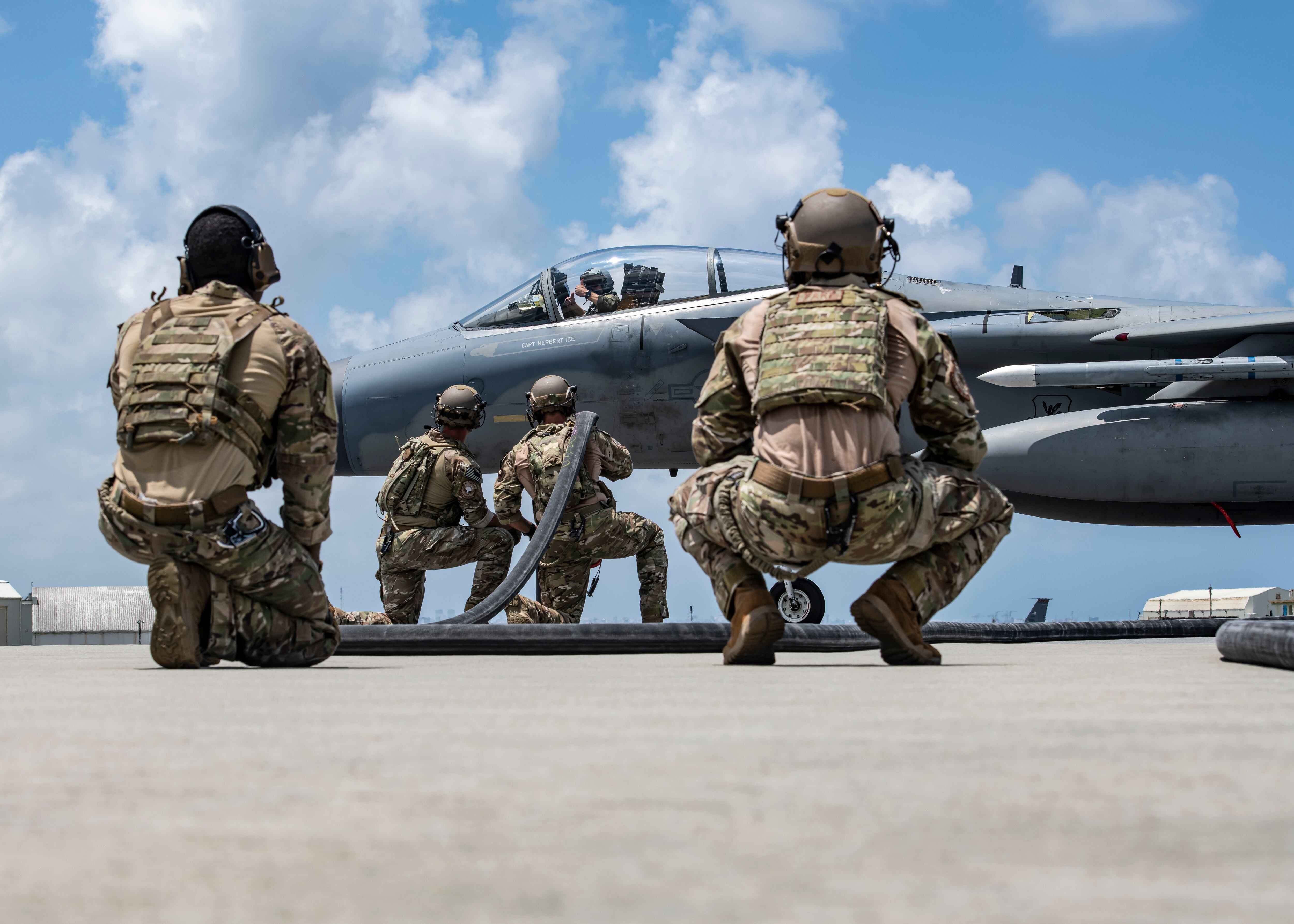WASHINGTON — Four key Republicans on Capitol Hill are questioning the Air Force’s decision to replace two permanent F-15C Eagle fighter squadrons in Okinawa with rotational forces.
In a letter to Defense Secretary Lloyd Austin, the lawmakers expressed concern about the plan and asked for a briefing on the decision to remove permanent forces from Kadena Air Base in Okinawa, Japan.
Sen. Marco Rubio, R-Fla., and Rep. Mike Gallagher of Wisconsin — the top Republican on the Armed Services personnel subcommittee — sent the letter on Tuesday. Sen. Bill Hagerty of Tennessee, the former ambassador to Japan, and Rep. Mike McCaul of Texas, the top Republican on the Foreign Affairs Committee, also signed onto the letter.
“This decision would involve half of the roughly 100 USAF fighters in Japan,” the lawmakers wrote. “While we agree with the need to modernize the Air Force’s fleet in order to counter the rising threat of the People’s Liberation Army, we are concerned with reporting that indicates that there will be no permanent presence to replace the Okinawa F-15s. Instead, USAF plans to send F-22 fighters from Alaska to Okinawa on only a rotational basis.”
The Air Force last week confirmed it was planning to start withdrawing its two squadrons of F-15s from Kadena beginning in November and would temporarily rotate in newer fourth-generation and fifth-generation fighters to take their place. The F-15 withdrawals are slated to take place in phases over the next two years; those fighters would be retired after returning to the U.S.
The Defense Department has not yet decided on a long-term plan for Kadena’s fighter presence and is still considering whether to stick with the rotational model or eventually permanently deploy squadrons to Kadena once again.
Asked Tuesday how soon the U.S. would have a set plan to replace the F-15s, Pentagon Press Secretary Air Force Brig. Gen. Pat Ryder didn’t answer directly, but told reporters the U.S. commitment to the security of Japan and the region “remains ironclad.”
Rubio, Gallagher, Hagerty and McCaul asked Austin to provide a briefing on “steps to replace the deterrent value and combat capability of any assets removed from the Indo-Pacific region as well as the administration’s plan to establish a force posture in the Indo-Pacific that would be resilient to a [Chinese Communist Party] attack and capable of deterring an invasion of Taiwan.”
“We believe that [the Defense Department’s] plans to replace permanently-based fighters with rotational forces will lead to a tangible reduction in American forward combat power in the Indo-Pacific, lowering the bar for aggression and demonstrating a continuing mismatch between the Biden Administration’s talking points on the Indo-Pacific and America’s actual commitments in the region,” the lawmakers wrote. “We are concerned that [the Defense Department’s] decision sends the wrong signal, not only to the [Chinese Communist Party], but also to our allies and partners in the Indo-Pacific.”
The Air Force’s fleet of F-15C and D fighters are well into their third decade of service and nearing the end of their lives. The service is moving to retire them and replace them with newly-built F-15EX Eagle II fighters that have modern avionics, such as fly-by-wire controls, and updated capabilities including new electronic warfare gear.
Separately, Australian media outlets reported this week the U.S. plans to send six nuclear-capable B-52 bombers to northern Australia — drawing a sharp rebuke from China.
“Such a move by the U.S. and Australia escalates regional tensions, seriously undermined regional peace and stability, and may trigger an arms race in the region,” Chinese Foreign Ministry spokesman Zhao Lijian said in response.
The Pentagon confirmed the B-52 deployments and linked them to U.S. investments in airfield infrastructure improvements at Tindal air base in Australia and joint cooperation in Australia’s Northern Territory.
Ryder said it’s not uncommon for the U.S. to send aircraft to Australia, with which the U.S. has a long relationship, to take part in joint exercises.
”It does send a clear signal to countries in the region, first of all, that the U.S. is a reliable partner and that we do maintain capabilities to be available to respond to a variety of contingencies worldwide,” he said. “But it also sends a clear message that we have the capability to deter and if necessary engage.”
Bryant Harris is the Congress reporter for Defense News. He has covered U.S. foreign policy, national security, international affairs and politics in Washington since 2014. He has also written for Foreign Policy, Al-Monitor, Al Jazeera English and IPS News.
Stephen Losey is the air warfare reporter for Defense News. He previously covered leadership and personnel issues at Air Force Times, and the Pentagon, special operations and air warfare at Military.com. He has traveled to the Middle East to cover U.S. Air Force operations.
Joe Gould was the senior Pentagon reporter for Defense News, covering the intersection of national security policy, politics and the defense industry. He had previously served as Congress reporter.





